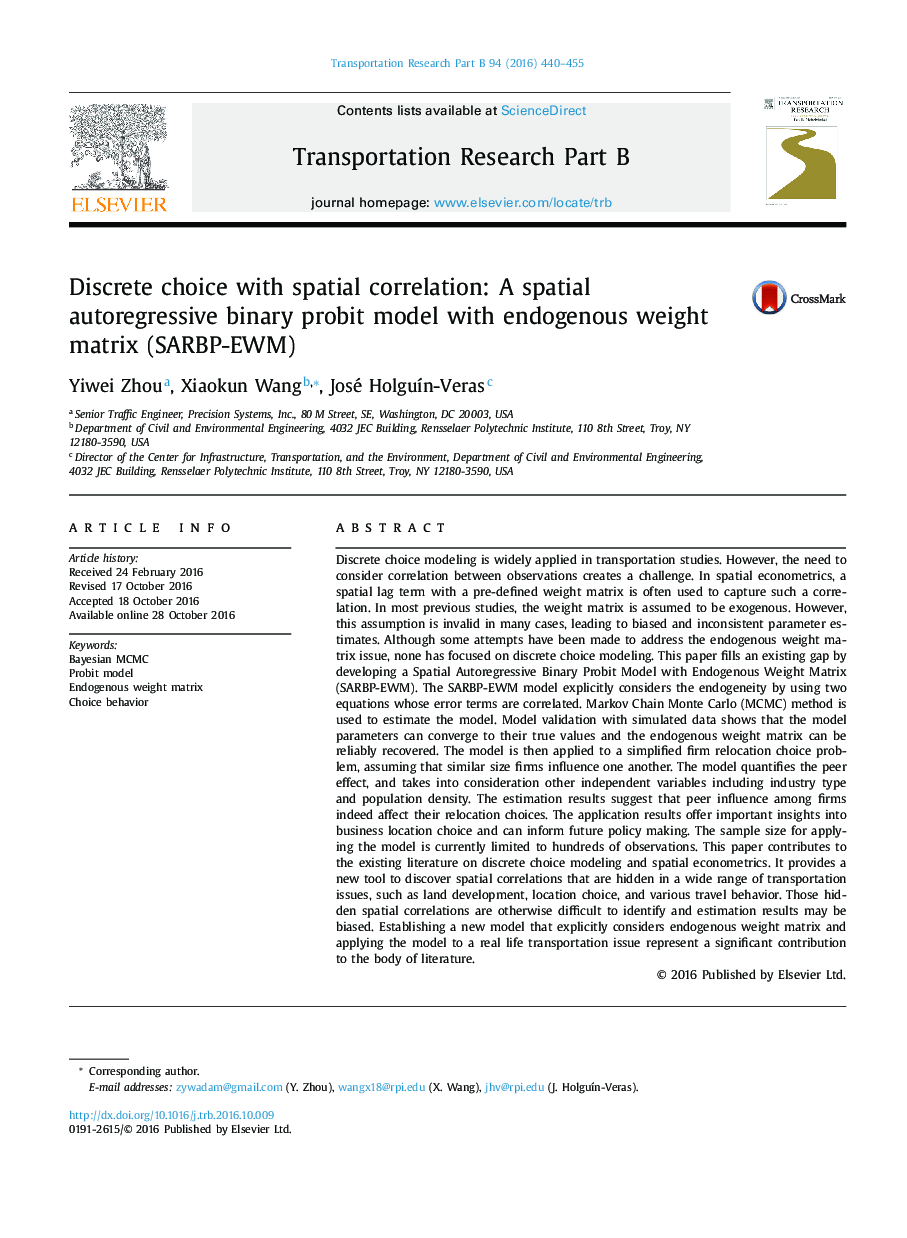| کد مقاله | کد نشریه | سال انتشار | مقاله انگلیسی | نسخه تمام متن |
|---|---|---|---|---|
| 5127164 | 1488952 | 2016 | 16 صفحه PDF | دانلود رایگان |

- The SARBP-EWM model explicitly considers endogeneity of weight elements in a spatial lag structure.
- Markov Chain Monte Carlo (MCMC) method is used to estimate the model.
- Validation shows model superiority over models ignoring the endogeneity.
- Model indicates that peer effect exists in firm location choice.
Discrete choice modeling is widely applied in transportation studies. However, the need to consider correlation between observations creates a challenge. In spatial econometrics, a spatial lag term with a pre-defined weight matrix is often used to capture such a correlation. In most previous studies, the weight matrix is assumed to be exogenous. However, this assumption is invalid in many cases, leading to biased and inconsistent parameter estimates. Although some attempts have been made to address the endogenous weight matrix issue, none has focused on discrete choice modeling. This paper fills an existing gap by developing a Spatial Autoregressive Binary Probit Model with Endogenous Weight Matrix (SARBP-EWM). The SARBP-EWM model explicitly considers the endogeneity by using two equations whose error terms are correlated. Markov Chain Monte Carlo (MCMC) method is used to estimate the model. Model validation with simulated data shows that the model parameters can converge to their true values and the endogenous weight matrix can be reliably recovered. The model is then applied to a simplified firm relocation choice problem, assuming that similar size firms influence one another. The model quantifies the peer effect, and takes into consideration other independent variables including industry type and population density. The estimation results suggest that peer influence among firms indeed affect their relocation choices. The application results offer important insights into business location choice and can inform future policy making. The sample size for applying the model is currently limited to hundreds of observations. This paper contributes to the existing literature on discrete choice modeling and spatial econometrics. It provides a new tool to discover spatial correlations that are hidden in a wide range of transportation issues, such as land development, location choice, and various travel behavior. Those hidden spatial correlations are otherwise difficult to identify and estimation results may be biased. Establishing a new model that explicitly considers endogenous weight matrix and applying the model to a real life transportation issue represent a significant contribution to the body of literature.
Journal: Transportation Research Part B: Methodological - Volume 94, December 2016, Pages 440-455